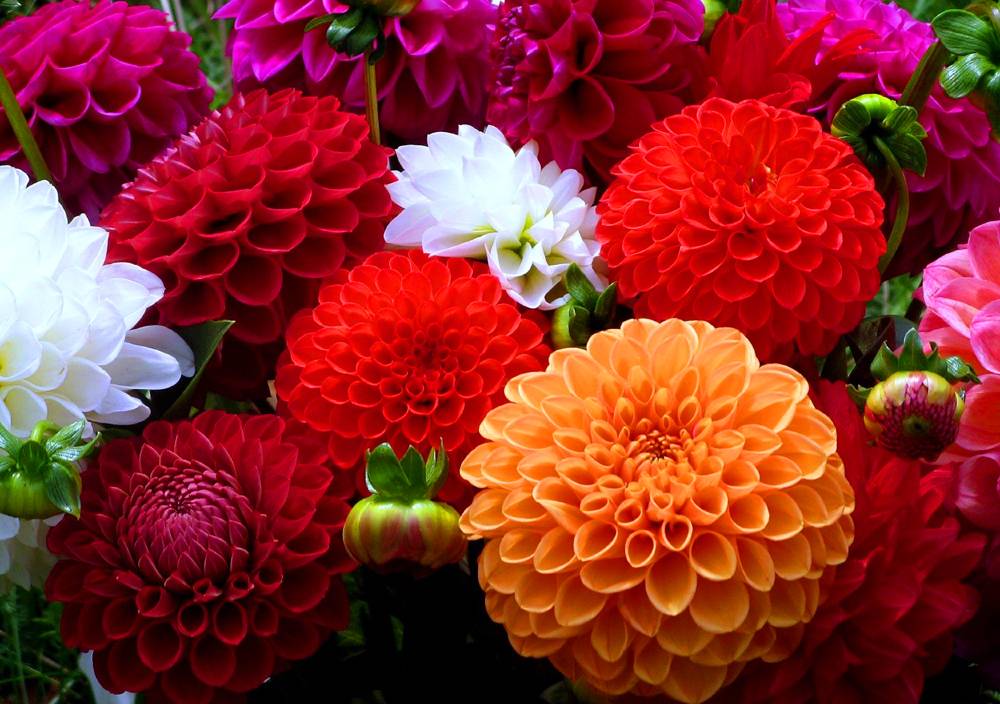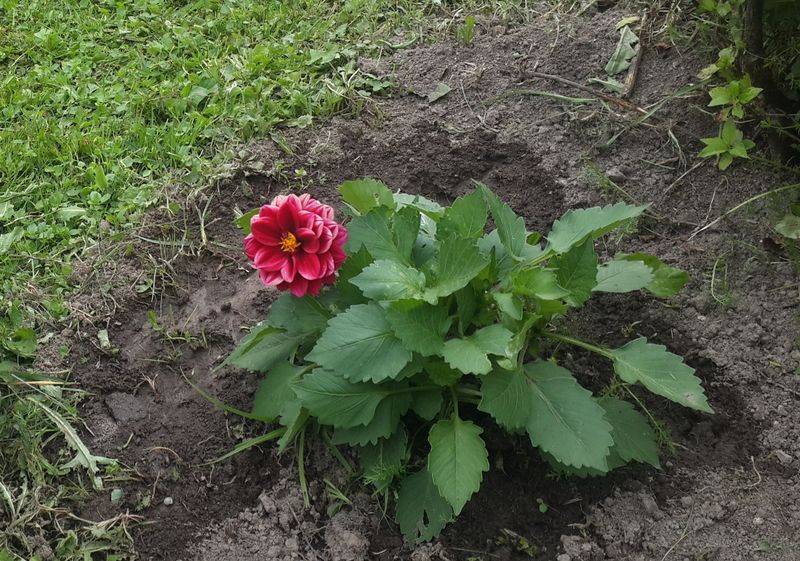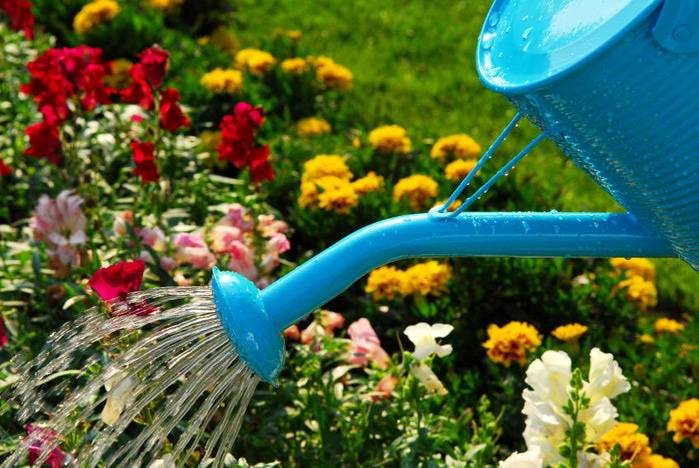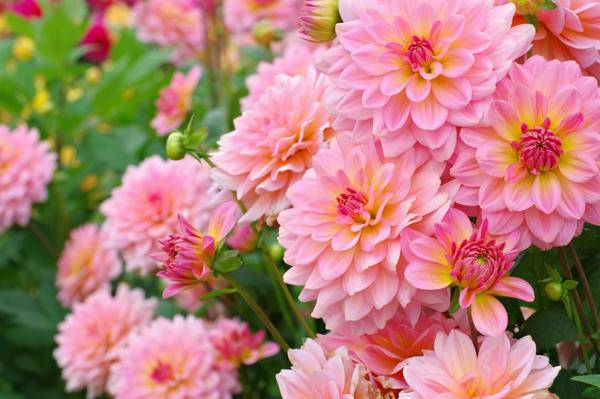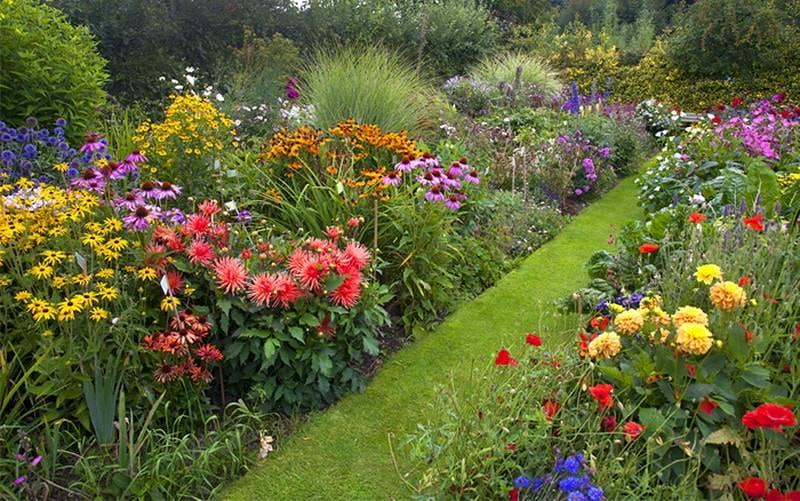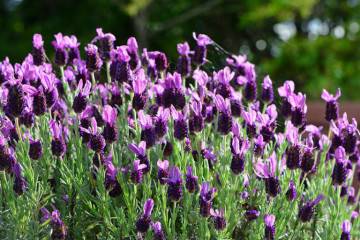Dahlias - planting and care in the open field
Content:
Dahlias are spectacular representatives of the Astrov family. The plant has a long flowering and serves as a decoration for any summer cottage. Culture is characterized by a variety of shades and forms. When growing dahlias, planting and care in the open field is of interest to many people.
Characteristics of dahlias: varieties and varieties
It is a fairly attractive ornamental crop that has many advantages. It is worth buying tubers in the spring. This will ensure rapid development of the bushes and abundant flowering.
The plant has different types. They differ in color, shape, color, structure. Popular types of culture include the following:
- Simple ones have 1 row of petals and reach 10 cm in diameter. These are low-growing bush plants that do not exceed 45-60 cm in height. The color depends on the variety and can be yellow, pink, orange-red.
- Anemonic - this name is understood as dahlias with 1 or more edge petals. In the middle there are tubular inflorescences. The flowers do not exceed 10 cm in diameter.The bushes reach 60-90 cm in height.
- Collar - they reach 10 cm in diameter. In this case, the bushes can grow up to 1.2 m. For such plants, 1 edge row of petals is characteristic. On its top are twisted petals of a different shade.
- Peony - flowers reach 12-15 cm in diameter. They are characterized by flat petals at the edges. They are arranged in 2 or more rows. Bushes grow up to 1.2 m.
- Decorative - have terry inflorescences that may vary in size. The diameter is 8-25 cm. In height, the culture reaches 60 cm. The color of the petals can be different - lilac, orange, yellow.
- Spherical - they are characterized by round-shaped terry inflorescences. Their diameter is 8-15 cm. Bushes grow up to 90-120 cm.
- Pompon - spherical flowers reach 5 cm in diameter. Rolled petals with rounded or blunt ends are present along the edges.
- Cactus - double inflorescences reach 8-25 cm. Bushes are 90-150 cm in height. The marginal petals are narrow and have a pointed shape.
- Nymphaean - in appearance they resemble regular water lilies. They are 7-20 cm in diameter. Bushes can grow up to 1.3 m.
Planting a plant
To be successful in growing your crop, you need to know how to plant dahlias correctly. This can be done in a number of ways.
Seed planting
The seeds can be planted in a regular food container. Dahlias require light and nutritious soil. He must be fertile. Any loosening substrate should be added to ordinary soil - sand, perlite, vermiculite.
To plant annual dahlias, you should do the following:
- Fill the container with soil and compact.
- Moisten the soil abundantly with a spray bottle.
- The seeds of annuals are large. Therefore, they can be easily distributed over the surface and pressed into the ground.
- Sprinkle with soil 1.5-2 cm.
- Cover with a lid or germination film.
Shoots will appear in 3-4 days.They need to provide a temperature regime of 23-25 degrees. The duration of daylight hours should be 12-14 hours.
When 2 true leaves appear in annual bushes, it is recommended to plant seedlings in separate containers. Disposable glasses are suitable for this.
Post-planting care is fairly straightforward. To do this, you need to water the plants as the soil dries up and maintain daylight hours. To do this, place the pots on a lighted windowsill or use lighting.
Planting seedlings
People are often interested in how to properly plant dahlias in a seedling way. This should be done in the absence of the risk of recurrent frosts - in the second half of May. If there is such a threat, it is worth stocking up on covering material.
You need to plant dahlias in a well-lit area. They need to be protected from the wind. The soil should have a loose consistency. It is recommended to add humus or compost to the composition.
The dahlia planting site should be sunny and well sheltered from the wind. It is important to keep the optimum distance between plants. It should be 20-30 cm - it all depends on the variety and height of the crop.
Growing dahlias outdoors is pretty easy. To do this, you need to pull out the plant with a lump of earth and carefully place it in a small depression. Then sprinkle with soil and water. A layer of mulch should be placed on top.
Dahlias: planting and care in the open field
Many are interested in how to properly care for dahlias. Watering the plants is required abundantly enough. If there is no precipitation, this should be done 1-2 times a week. Watering too often is not required. Moisture should not stagnate near the roots. Perennial tubers can rot.
If the weather is hot, after moistening the soil, the bushes should be hilled. Before the next watering, you need to rake off the soil, water the plants and huddle again.
For proper care of dahlias, do not neglect the recommendations for loosening the soil. Usually this procedure is carried out after watering or fertilizing.
After the completion of loosening, the soil is covered with a mulch layer - peat or humus. This helps to avoid the appearance of a crust on the surface, to stop the development of weeds, and to reduce the amount of dressing.
Reproduction methods
Perennial dahlias are propagated in such ways - by dividing the tuber and cuttings. In the first case, it is necessary to clearly see the points of growth. Each part of the root collar should have sprouts.
Propagation by cuttings is carried out using sprouted tubers. To do this, the root must be dug out, the sprout must be cut off with a sharp knife, capturing a fragment of the tuber. Then transplant the plant into a new pot and water. It will quickly release roots and form tubers.
It is also permissible to perform stem cuttings of the plant. If 3 pairs of true leaves have appeared on the seedlings, the stem can be cut just above the first pair. In this case, the cutting should be planted in the ground and covered with a bottle to wait for the formation of roots. Subsequently, the cuttings are planted in the garden by transshipment.
Top dressing and fertilizers
To grow dahlias, during the growing season it is worth fertilizing 2 times a month. In this case, mineral and organic products should be used. They need to be introduced into the soil in turn.
An infusion of mullein or bird droppings is used as organic matter. Ammonium nitrate is also suitable. To do this, take 15 g of the product per 1 square meter.
In order for the culture to grow fully, when the first buds appear, it is worth using superphosphate and potassium-based fertilizers.To do this, take 30 g of the substance for 10 liters of water.
Plant transplant
Sometimes it becomes necessary to transplant a flowering plant. During this period, many new shoots appear on the culture. When digging up the culture, part of the roots is destroyed. As a result, the plant, instead of lush flowering, begins to spend energy on restoring the integrity of the roots.
A decrease in growth activity provokes a loss of decorativeness and a deterioration in color. The plant will look sick. If there is an urgent need to transplant an adult plant, this should be done with a large clod of earth. This will help prevent damage to the delicate roots.
Dahlia pruning
To get large decorative inflorescences, the plant must be properly pruned. For this, no more than 3 stems should remain on the bush. If you neglect this rule, dahlia flowers will be small and ugly. Extra buds should be removed from each peduncle. In this case, it is necessary to leave 1-2 flowers.
Throughout the season, it is worth cutting off the growing side shoots from tall varieties. They can be used as cuttings. In low varieties, side branches can be left.
Pests and diseases
Dahlias can face various pathologies. One of them is a black leg. It is a fungal infection that affects young stems. As a result, the culture dies. At the first symptoms of pathology, the soil under the plant should be disinfected with a solution of potassium permanganate.
When yellow spots appear, the development of white rot can be suspected. In this case, the plant must be removed from the site and the soil must be treated with bleach.
If the plant is covered with a bloom of cobwebs, this indicates the development of powdery mildew. This is due to increased dryness of the air or sharp temperature fluctuations. In such a situation, it is worth sprinkling the culture with a sulfur solution or fungicide. A solution of laundry soap or copper sulfate would be an excellent option.
When spots appear and leaves curl, a viral infection can be suspected. Such plants must be removed, and the soil and tools must be disinfected.
Of the pests, dahlias most often suffer from ticks, aphids, bedbugs. Young leaves are often damaged by slugs, and earwigs cause bud damage.
Bushes should be treated once a week with a decoction of wormwood or celandine. To get rid of ticks or aphids, flowers must be treated with Karbofos or Dichlorvos.
Flowering period and care during this period
At this time, it is worth using organic fertilizers. To extend the duration of flowering, it is worth shortening the daylight hours. To do this, young plants should be covered with black film for 2-3 weeks. This must be done from 16 o'clock.
Preparing for winter
With the arrival of cold weather, tubers must be removed from the ground. At the end of summer, you need to stop watering and feeding. At the end of August, the bases of the stems must be spud 15-18 cm.
Then the stems must be bare 40 cm from the ground. To do this, it is worth cutting off the lower leaves and side shoots. When the dahlias droop, the tubers should be dug up.
This needs to be done in several stages:
- cut off the stems by 15 cm;
- carefully dig in a nest with tubers;
- pour water from the stems and place in a box for long-term storage.
First, the container with tubers should be placed in a room with a temperature of +8 degrees. Air humidity should be 80%. Then the tubers should be cleaned of soil, remove the roots and sprinkle the cuts with crushed coal.
Cover the nests with ash and store in plastic containers for winter storage. Sprinkle with peat or sawdust on top. Place the container in a well ventilated basement. In this form, the tubers will winter.
Many gardeners are interested in how sprouted dahlias can be preserved before planting. Plants need to be folded in bags and covered with earth. Fold them tightly into the box.
Use in landscape design
Flowers are often used to decorate flower beds, lawns, borders. The landscape designer will tell you which option is suitable for a specific site. His advice will help you achieve perfect results.
Varieties with large rosettes and lush blooms can be planted as a tapeworm. Several types of plants are popular with florists. They stand in a vase for a long time and retain their decorative properties. These dahlias have long, sturdy stems.
Even a few low bushes can become a real decoration of an alpine slide or rockery. They will make the landscape more vivid and colorful.
When choosing additions to dahlias, it is worth considering the peculiarities of the color scheme. Too variegated combination will destroy the composition of landscape design. Shades differ in a certain semantic load and evoke emotions in people. Bad combinations can seriously ruin your mood.
Dahlias are loved by many people. They are distinguished by their excellent appearance and fit perfectly into the landscape design. To achieve success in growing, it is worth following agrotechnical rules.

